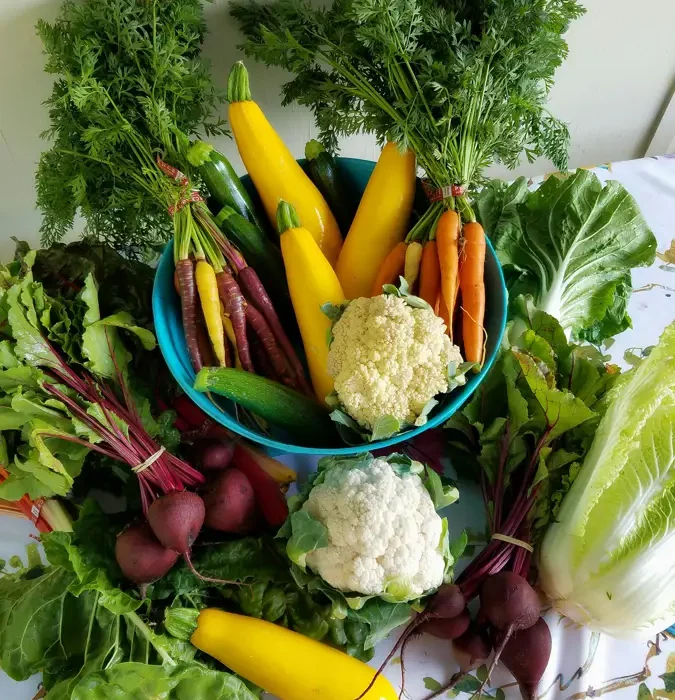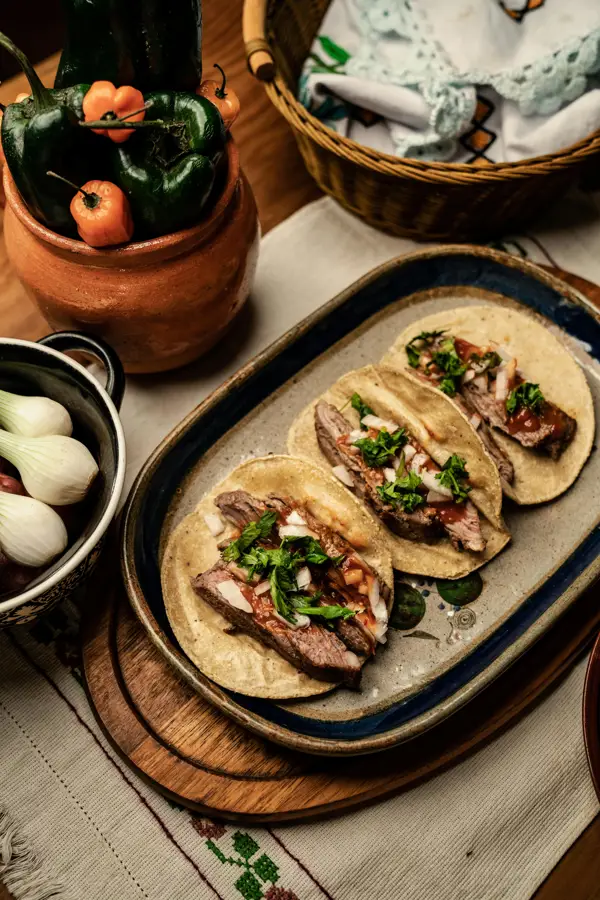Cauliflower, a humble cruciferous vegetable with origins tracing back to the Mediterranean region, has quietly ascended to stardom in the culinary world. Its history is intertwined with that of its close relative, the cabbage, with evidence suggesting cultivation dating back thousands of years. Ancient Greeks and Romans incorporated cauliflower into their diets, though its widespread adoption wasn’t until the Middle Ages, spreading throughout Europe and eventually making its way to the Americas. Initially considered a delicacy, reserved for the upper classes, cauliflower’s accessibility grew over time, solidifying its place as a staple in countless cuisines.
The cultural significance of cauliflower varies across different societies. In some cultures, it’s a symbol of purity and wholesomeness, often featuring prominently in celebratory meals. In India, cauliflower is a cornerstone ingredient, utilized in an array of curries, stir-fries, and even snacks. Similarly, in many parts of Europe, it’s a foundational element in classic comfort foods. The versatility of cauliflower, its ability to mimic the texture of other foods like rice or potatoes, has made it increasingly popular in contemporary cuisine, particularly within health-conscious communities. This adaptability is key to its rise in popularity as a substitute for higher-calorie ingredients in dishes like tacos.
The modern-day taco, a beloved staple of Mexican cuisine, has undergone a significant global transformation. While its origins are firmly rooted in Mexican culinary traditions, the taco has become a highly adaptable and versatile dish, inspiring countless variations around the world. The global taco market is a multi-billion dollar industry, demonstrating its widespread appeal. This accessibility, coupled with a growing awareness of the health benefits of vegetables, has created a perfect storm for the rise of healthier taco alternatives. Cauliflower, with its low calorie count and high nutritional value (a single cup of cauliflower florets contains approximately 25 calories and a significant amount of Vitamin C), has naturally emerged as a favored ingredient in this health-conscious culinary revolution.
Interestingly, the transition from traditional meat-heavy tacos to vegetarian and vegan options, reflects a growing global trend towards plant-based diets. Reports suggest a significant increase in the consumption of plant-based proteins and vegetables in recent years, with many consumers actively seeking healthier, more sustainable alternatives. This increasing demand for healthier and more sustainable food options has fueled the innovation of dishes like healthy cauliflower tacos, offering a delicious and nutritious way to enjoy a classic dish while prioritizing health and wellbeing.
Ingredients and Measurements
This recipe for Healthy Cauliflower Tacos yields approximately 6 servings. Accurate measurements are crucial for achieving the desired texture and flavor. We recommend using a kitchen scale for the most precise results, especially when measuring the cauliflower rice. However, volume measurements are provided as alternatives.
Cauliflower Rice: The foundation of these tacos. We’ll use a large head of cauliflower, approximately 2 pounds (900g). If you’re using pre-prepared cauliflower rice from the grocery store, adjust the quantity according to package instructions, aiming for approximately 4 cups once riced. Ensure your cauliflower is fresh and firm for the best results. Wilted cauliflower will yield a less desirable texture.
Seasoning Blend: A vibrant blend of spices elevates the cauliflower. We’ll use:
- 1 tablespoon chili powder (adjust to your spice preference)
- 1 teaspoon cumin (ground)
- 1/2 teaspoon smoked paprika (for a deeper flavor)
- 1/2 teaspoon garlic powder
- 1/4 teaspoon onion powder
- 1/4 teaspoon cayenne pepper (optional, for extra heat)
- 1/2 teaspoon sea salt
- 1/4 teaspoon black pepper
Feel free to experiment with other spices! Consider adding oregano, coriander, or even a pinch of chipotle powder for a smoky kick. Always taste and adjust seasoning as needed throughout the cooking process.
Healthy Fats & Flavor Enhancers: These add depth and richness to the cauliflower without compromising health.
- 1 tablespoon olive oil (or avocado oil) – Use a high-heat oil for sautéing.
- 1/2 medium red onion, finely chopped (approximately 1/2 cup)
- 1 bell pepper (any color), finely chopped (approximately 1 cup)
- 2 cloves garlic, minced or pressed
Important Note: Finely chopping the onion and bell pepper ensures even cooking and prevents large chunks from overpowering the cauliflower’s flavor. Mincing the garlic releases its aromatic compounds more effectively.
Taco Toppings (Choose your favorites!): The possibilities are endless! Here are some suggestions:
- 1 avocado, diced
- 1/2 cup chopped cilantro
- 1/2 cup plain Greek yogurt or dairy-free alternative
- 1 lime, cut into wedges
- Your favorite salsa (fresh or store-bought)
- 12 small corn or gluten-free tortillas
Recommendation: Choose toppings that complement the flavors of the spiced cauliflower. A variety of textures and colors will make your tacos visually appealing and more enjoyable.
Optional additions: Consider adding a can (15 ounces) of black beans or kidney beans, drained and rinsed, for extra protein and fiber. You can also incorporate corn kernels, either fresh or frozen, for added sweetness and texture.
Equipment and Utensils
Making delicious and healthy cauliflower tacos requires the right tools to ensure efficient and consistent results. This section details the essential equipment and utensils you’ll need, along with recommendations for optimal performance.
For Preparing the Cauliflower: You’ll need a large cutting board (at least 12 x 18 ) for safely and comfortably chopping the cauliflower. A sharp chef’s knife (8-10 inches) is crucial for efficient and even chopping; a dull knife will bruise the cauliflower and make it harder to work with. Consider using a food processor fitted with a grating blade for faster processing, especially if you’re making a large batch. If using a food processor, a large bowl is necessary to hold the grated cauliflower. A measuring cup (at least 2 cups) and a set of measuring spoons are essential for accurate ingredient measurement.
For Cooking the Cauliflower: A large skillet (12 inches or larger) with a non-stick surface is ideal for sautéing the cauliflower. A non-stick surface prevents sticking and ensures even browning. A sturdy spatula, preferably made of silicone or wooden material to avoid scratching the pan, is needed for stirring and flipping the cauliflower. For even cooking and browning, it’s highly recommended to use a skillet that is appropriately sized for the amount of cauliflower you’re cooking. Overcrowding the pan will result in steaming rather than sautéing.
For Assembling the Tacos: You’ll need a baking sheet if you choose to roast the cauliflower instead of sautéing it. Line it with parchment paper for easy cleanup. A set of small bowls will be useful to hold your taco toppings and ingredients. Invest in good quality corn or gluten-free tortillas. Their size and flexibility are important for easy assembly. Warming the tortillas is recommended for better texture and pliability; this can be achieved using a dry skillet, microwave, or oven.
Optional Equipment: A vegetable peeler can be helpful for removing any tough outer leaves from the cauliflower. If you plan to make your own taco seasoning, a spice grinder or mortar and pestle will be beneficial for grinding whole spices. For a truly professional finish, consider using a piping bag or a zip-top bag with a corner snipped off to neatly apply your toppings. A pair of tongs can facilitate the handling of the hot tortillas and cooked cauliflower.
Cleaning Up: Always remember to have a designated area for food preparation and another for cleaning. Having a sink with hot soapy water readily available, along with dish towels, will significantly help with the post-cooking cleanup process. Properly cleaning and storing your equipment after use will extend their lifespan and maintain their efficiency.
By using the appropriate equipment and utensils, you’ll not only make the process of creating healthy cauliflower tacos easier and more efficient, but you’ll also improve the overall quality and taste of your final dish.
Cauliflower Preparation
Preparing the cauliflower correctly is crucial for achieving tender, flavorful cauliflower tacos. This section details the steps involved in transforming a head of cauliflower into a delicious and healthy taco filling.
First, you’ll need one large head of cauliflower (approximately 2 pounds). Begin by rinsing the cauliflower under cold running water to remove any dirt or debris. Thoroughly inspecting the cauliflower for any blemishes or damaged florets is also recommended. Remove any visibly damaged leaves or florets before proceeding.
Next, we’ll cut the cauliflower into smaller, more manageable pieces. The goal is to create uniformly sized pieces that will cook evenly. Avoid making the pieces too large, as this will result in uneven cooking and some pieces remaining raw while others are overcooked. I recommend cutting the cauliflower into florets approximately 1 inch in size. You can achieve this by first cutting the cauliflower into quarters, then removing the core and chopping the remaining sections into bite-sized pieces.
Once the cauliflower is cut, you have several options for preparation, depending on your preferred texture and cooking method. For a quick and easy method, you can proceed directly to roasting or pan-frying. However, for a finer texture that mimics ground meat better, consider using a food processor.
Using a food processor: Pulse the cauliflower florets in a food processor until they are finely chopped but not completely pureed. You want a slightly chunky texture, similar to ground meat but still visibly identifiable as cauliflower. Avoid over-processing, as this will result in a mushy texture. Process in short bursts, checking the consistency frequently.
Important Note: If you prefer a coarser texture, simply skip the food processor step and proceed directly to roasting or pan-frying the 1-inch florets. This method retains more of the cauliflower’s natural texture and is a great option if you’re short on time or prefer a slightly less processed dish.
Regardless of your chosen method (food processor or not), before cooking, ensure the cauliflower is relatively dry. Excess moisture will hinder the browning process and result in a steamed, rather than roasted or pan-fried, texture. You can achieve this by spreading the cauliflower on a clean kitchen towel or paper towels and gently patting it dry. This step is crucial for achieving a good crust and preventing steaming.
Finally, before cooking, consider adding a small amount of salt and pepper to the cauliflower. This will season the cauliflower and enhance its flavor. You can also add other spices at this stage, based on your preferred taste. Experiment with different spice blends to create your own unique cauliflower taco filling!
Taco Seasoning Preparation
Creating your own taco seasoning allows for complete control over ingredients and sodium content, a crucial aspect of healthy cooking. This recipe provides a flavorful and customizable base, easily adjusted to your preferences. We’ll be making enough seasoning for approximately 1.5 lbs of cauliflower rice, but you can easily scale it up or down depending on your needs.
Ingredients:
- 2 tablespoons chili powder (adjust to your spice preference)
- 1 tablespoon smoked paprika (adds depth of flavor)
- 1 teaspoon cumin (earthy and warm)
- 1 teaspoon garlic powder (potent flavor boost)
- 1 teaspoon onion powder (adds sweetness and savory notes)
- 1/2 teaspoon oregano (herbaceous and slightly bitter)
- 1/2 teaspoon cayenne pepper (optional, for extra heat – start with less if unsure)
- 1/4 teaspoon sea salt (or to taste, adjust for your dietary needs)
- 1/4 teaspoon black pepper (freshly ground is best)
Instructions:
1. Combining the Spices: In a small bowl, whisk together all the dry ingredients: chili powder, smoked paprika, cumin, garlic powder, onion powder, oregano, cayenne pepper (if using), sea salt, and black pepper. Thorough mixing is key to ensure even distribution of flavors throughout your cauliflower rice.
2. Achieving the Right Consistency: The consistency of your seasoning should be a fine powder. If you find any large clumps, use a fork or whisk to gently break them down. Avoid over-mixing, as this can potentially generate heat and slightly alter the flavor profile of some spices.
3. Taste and Adjust: This is a crucial step. Taste a tiny pinch of the seasoning blend. Adjust the salt, chili powder, and cayenne pepper to your personal preference. Some prefer a milder flavor, while others enjoy a fiery kick. Remember, you can always add more spice later, but it’s harder to take it away.
4. Storage: Once you’re satisfied with the flavor, transfer the seasoning to an airtight container. Store it in a cool, dark, and dry place. This will help maintain its freshness and vibrant color for several months. Properly stored, your homemade taco seasoning will retain its flavor and aroma for a considerably longer duration than pre-packaged options.
Professional Recommendations:
- Quality Ingredients Matter: Using fresh, high-quality spices will significantly impact the overall taste of your seasoning. Invest in good spices for the best results.
- Experiment with Variations: Feel free to experiment with other spices such as chipotle powder, ancho chili powder, or even a dash of cinnamon for a unique flavor profile.
- Consider Fresh Herbs: For an extra layer of freshness, consider adding a teaspoon or two of finely chopped fresh cilantro or parsley to your cauliflower rice after cooking.
By following these steps, you’ll create a delicious and healthy taco seasoning that elevates your cauliflower tacos to a whole new level of flavor.
Cooking the Cauliflower
The key to delicious cauliflower tacos lies in perfectly cooked cauliflower rice. We’ll be aiming for a tender-crisp texture, avoiding mushiness or overly dry grains. This recipe uses a combination of methods to achieve the best results.
Begin by preparing your cauliflower. Remove the leaves and core, then coarsely chop the head into florets. Aim for florets roughly the size of a large walnut. Smaller pieces will cook faster and more evenly, while larger pieces may remain undercooked in the center. You should have approximately 4 cups of chopped cauliflower florets.
Next, we’ll pulse the cauliflower in a food processor. Do not over-process. You want to create a rice texture, with small, irregular pieces, not a completely smooth puree. Pulse in short bursts until you achieve your desired consistency. This step is crucial for even cooking and a pleasant mouthfeel in the final dish.
Heat 1 tablespoon of olive oil in a large skillet over medium heat. Once the oil is shimmering, add the cauliflower rice. Spread the cauliflower evenly across the pan to ensure consistent cooking. Avoid overcrowding the pan, which can lead to steaming instead of sautéing. If necessary, cook the cauliflower in batches.
Sauté the cauliflower for about 5-7 minutes, stirring frequently, until it begins to soften slightly. Season generously with salt and pepper. At this point, you can add other seasonings to enhance the flavor profile. Consider adding a pinch of garlic powder, onion powder, or cumin for a deeper, more complex taste. Experiment with your favorite spices to customize the flavor to your preference.
Now, we’ll introduce a touch of liquid to help the cauliflower steam and cook through without drying out. Add 1/4 cup of vegetable broth or water to the pan. Reduce the heat to medium-low, cover the skillet with a lid, and let the cauliflower steam for another 5-7 minutes, or until tender-crisp. Check frequently to prevent burning or overcooking.
Once the cauliflower is cooked to your liking, remove the skillet from the heat and let it sit uncovered for a minute or two to allow excess moisture to evaporate. This step helps to achieve a slightly drier, less soggy texture. Taste and adjust seasoning as needed, adding more salt, pepper, or other spices to your preference.
Your perfectly cooked cauliflower rice is now ready to be incorporated into your healthy cauliflower tacos! Remember, the cooking time may vary slightly depending on the size of your cauliflower florets and the heat of your stovetop. Always check for doneness by tasting a piece before proceeding. The goal is a tender-crisp texture, not mushy or raw cauliflower.
Assembling the Healthy Cauliflower Tacos
Now that your cauliflower meat is cooked and your toppings are prepped, it’s time to assemble the most delicious and healthy tacos you’ve ever tasted! This section will guide you through the process, ensuring perfectly constructed and flavorful tacos every time.
Start with the warm tortillas: Whether you’re using corn or flour tortillas, warming them is crucial for optimal texture. You can achieve this by heating them briefly in a dry skillet over medium heat for about 15-20 seconds per side, or by wrapping them in a damp paper towel and microwaving for 15-20 seconds. Avoid over-heating, as this can make them brittle and difficult to handle.
Portioning the Cauliflower: For a standard-sized taco, aim for approximately ⅓ cup of the cooked cauliflower mixture. This amount provides a satisfying filling without overwhelming the tortilla. Don’t overfill! Overfilling will make the tacos difficult to eat and increase the risk of spills. Gently fluff the cauliflower with a fork before adding it to the tortilla to ensure even distribution.
Strategic Topping Placement: The order in which you add your toppings can significantly impact the overall flavor and structure of your taco. We recommend starting with a base layer of your chosen sauce – whether it’s a vibrant salsa, a creamy avocado crema, or a zesty lime dressing. This adds moisture and prevents the cauliflower from drying out. Next, add your cauliflower mixture, distributing it evenly across the tortilla.
Building Layers of Flavor: Now comes the fun part – adding your toppings! Consider the texture and flavor profiles when arranging them. For example, you might layer shredded lettuce or finely chopped cabbage for a crisp contrast against the softer cauliflower. Next, sprinkle some finely diced red onion for a bit of sharpness and visual appeal. Then, add your cilantro for freshness and a pop of color.
Cheese and Other Additions: If you’re incorporating cheese, a sprinkle of crumbled cotija or a shredded Mexican blend adds a delightful salty and savory element. Consider the melting point of your chosen cheese. If using a cheese that melts easily, add it towards the end of the assembly process to avoid it becoming soggy. Other optional additions include pickled jalapeños for a spicy kick, or a dollop of Greek yogurt for extra creaminess.
Folding for Perfection: Once your taco is fully loaded, gently fold it in half or into thirds, depending on your preference and the size of your tortilla. Avoid pressing down too hard, as this can squish the fillings and create a messy taco. If you find the tortilla is too large, you can gently trim the edges before filling.
Serving Suggestions: Serve your healthy cauliflower tacos immediately for the best flavor and texture. They can be enjoyed as a light lunch, a satisfying dinner, or even as a delicious appetizer. Consider serving with a side of lime wedges for an extra burst of citrusy freshness. Enjoy!
Recommendations for Healthy Cauliflower Tacos
These healthy cauliflower tacos are a delicious and nutritious meal option, perfect for a weeknight dinner or a casual gathering. To maximize their flavor and nutritional benefits, consider the following recommendations:
Serving Suggestions: For a complete and satisfying meal, serve these tacos with a variety of fresh toppings. Consider adding a dollop of your favorite salsa (choose a low-sodium option to control sodium intake), a squeeze of lime juice for brightness, a sprinkle of chopped cilantro for freshness, and a spoonful of Greek yogurt or avocado crema for creaminess and healthy fats. Shredded lettuce, diced tomatoes, and pickled onions also make excellent additions. Experiment with different toppings to find your perfect combination!
Storage Conditions: Leftover cauliflower rice can be stored in an airtight container in the refrigerator for up to 3-4 days. To maintain optimal texture and flavor, avoid freezing the cooked cauliflower rice. The taco shells can also be stored separately in an airtight container at room temperature for up to 2 days, or in the refrigerator for up to a week. Ensure all components are thoroughly chilled before storing to prevent bacterial growth.
Complementary Dishes: These cauliflower tacos pair well with a variety of side dishes. A simple Mexican-inspired salad with black beans, corn, and a light vinaigrette would be a refreshing accompaniment. Alternatively, a side of roasted sweet potatoes or a vibrant guacamole would add depth to the meal. For a heartier side, consider a small bowl of black beans and rice. Remember to balance the overall meal’s nutritional content and calorie count.
Calorie and Nutritional Information (Approximate per serving, based on a recipe yielding 4 tacos): The exact nutritional information will vary depending on the specific ingredients used and portion sizes. However, a typical serving of this healthy cauliflower taco recipe might contain approximately 250-300 calories, 10-15g of protein, 25-35g of carbohydrates, and 5-10g of fat. This provides a good balance of macronutrients while being relatively lower in calories compared to traditional beef or chicken tacos. Always check your specific recipe and ingredient labels for accurate nutritional information.
Dietary Adaptations: This recipe is easily adaptable to various dietary needs and preferences. For a vegan option, ensure your taco seasoning and any added toppings are vegan-friendly. For those following a gluten-free diet, choose gluten-free corn tortillas. Always carefully check ingredient labels to ensure they meet your specific dietary requirements.
Tips for Success: To ensure your cauliflower rice is perfectly cooked, don’t overcrowd the pan when sautéing. Work in batches if necessary. Properly ricing the cauliflower is crucial for achieving the desired texture. Don’t overcook the cauliflower, as this can result in a mushy texture. Season generously! Experiment with different spices and herbs to create your signature flavor profile.
Enjoy your delicious and healthy cauliflower tacos!





